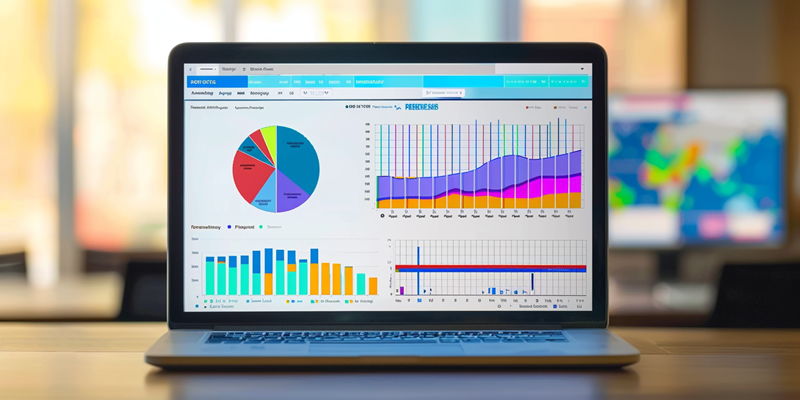Advancements in data science and predictive analytics have begun to significantly transform Human Resource (HR) strategies within organizations. By tapping into the power of predictive analytics, HR professionals can move beyond traditional reactive practices and instead employ proactive approaches that utilize historical data, statistical algorithms, and machine learning techniques. This revolutionary shift not only enhances decision-making in areas such as recruitment and employee performance but also assists companies in adapting to the ever-evolving landscape of the workplace. With these tools at their disposal, HR departments are well-equipped to contribute to their organizations’ success at a higher level than ever before.
Introduction to Predictive Analytics in Human Resources
Embracing data to guide decisions has become a cornerstone for leading organizations seeking to refine their talent management strategies. Predictive analytics serves as the beacon for this evolution, harnessing the wealth of historical HR data to generate powerful insights. This forward-thinking practice empowers HR departments to forecast future workforce trends, enabling better recruitment, retention, and performance evaluation approaches. As the business landscape continues to shift, those who adeptly integrate these analytical technologies will lead the charge toward organizational achievement.
Predictive analytics in HR is not just about number-crunching; it’s a strategic enabler that, when utilized correctly, can identify critical future trends and prepare organizations for what’s next. By understanding the methodologies at the heart of predictive analytics, such as statistical techniques and machine learning, HR can evolve from a supportive function to a strategic powerhouse.
Grasping the Concept of Predictive Analytics in HR
The essence of predictive analytics lies in its name—predicting future outcomes. In the HR context, it means analyzing past data to identify patterns that can inform future HR policies and actions. By applying techniques like regression analysis, decision trees, and machine learning, HR departments can make educated predictions about which strategies will likely yield the best outcomes, whether it’s identifying the most promising candidates or forecasting staffing needs.
These methodologies allow HR professionals to proactively address challenges rather than reactively responding to them. Predictive analytics provides the blueprint for developing more informed, data-backed strategies that can transform how organizations manage and support their workforce.
Initiating Predictive Analytics in HR
Setting up a predictive analytics initiative within HR starts with establishing robust data foundations. This involves meticulously collecting and managing data from diverse sources—ranging from employee surveys to performance metrics—while ensuring high data quality and compliance with privacy regulations. The groundwork laid in this step is crucial, as the integrity of the data dictates the accuracy of any subsequent predictive analysis.
Once the data is ready, the next challenge is selecting the right analytical tools. The technology must align with organizational needs and objectives, offering ease of use, scalability, and the capability to integrate seamlessly with existing systems. With the right tools in hand, educating and fostering an analytics-centric mindset within HR teams becomes possible, marking the true beginning of a data-informed HR strategy.
Launching Predictive Analytics Programs in HR
Embarking on the actual development of predictive analytics programs in HR requires setting clear, measurable goals that ladder up to organizational objectives. This step involves defining KPIs that will serve as benchmarks for success. Following goal setting, HR teams delve into data analysis and model formulation, applying exploratory techniques to understand the data at their disposal before creating predictive models to test their hypotheses.
Interpreting outcomes from these models to form actionable HR strategies is the next crucial step. The insights garnered allow HR departments to innovate and adapt their processes and policies effectively. However, the reliability of these insights is grounded in rigorous model validation, which ensures that the results are accurate and reflective of real-world dynamics.
Navigating Hurdles and Avoiding Common Mistakes
The journey to successfully implementing predictive analytics is fraught with potential challenges. One of the primary obstacles is ensuring the integrity of data, as flawed data can lead to misguided strategies. Similarly, aligning stakeholders and securing their support is essential to navigate resistance that may arise from misconceptions about the role of predictive analytics in HR.
Strategically reducing risks and achieving high levels of project success comes from establishing proactive data governance and encouraging collaboration across departments. These collaborative efforts help to create a synergy that recognizes and addresses the multifaceted challenges predictive analytics projects may encounter.
Honoring Ethical Standards in Predictive Analytics
The capabilities of predictive analytics come with inherent ethical responsibilities. HR departments must navigate issues of fairness and bias within algorithms, ensuring that decisions made through predictive models do not inadvertently discriminate. Moreover, preserving employee privacy in the age of data is paramount. Complying with privacy laws and maintaining transparent data practices is not only a legal requirement but also a moral obligation.
When ethical standards are upheld, HR analytics becomes not just a tool for efficiency and predictive insight but also a reflection of the organization’s commitment to its workforce’s dignity and rights.
Looking Forward: Evolutionary Trends in Predictive Analytics for HR
The continued development and sophistication of predictive analytics tools promise unparalleled advantages for HR strategies. As analytics software becomes even more intuitive and integrated with HR systems, the potential for transformative change grows. Anticipating not just individual employee trajectories but also broader workforce dynamics will become more accurate and nuanced.
This continual evolution requires an ongoing commitment to education and adaptation within HR departments. Staying abreast of technological advancements and data science best practices is necessary to leverage the full potential of predictive analytics. Those at the forefront of this movement will set the benchmark for strategic HR management, marking a new era where data informs and enhances every aspect of the employee experience.

